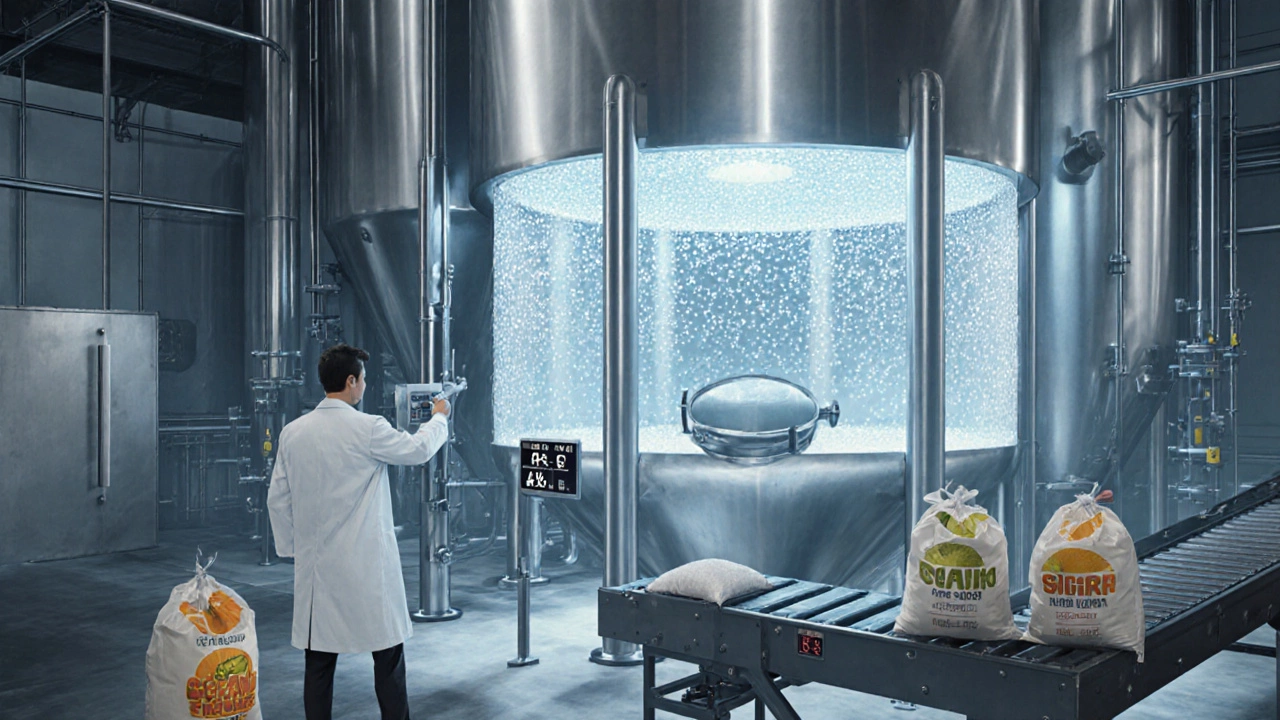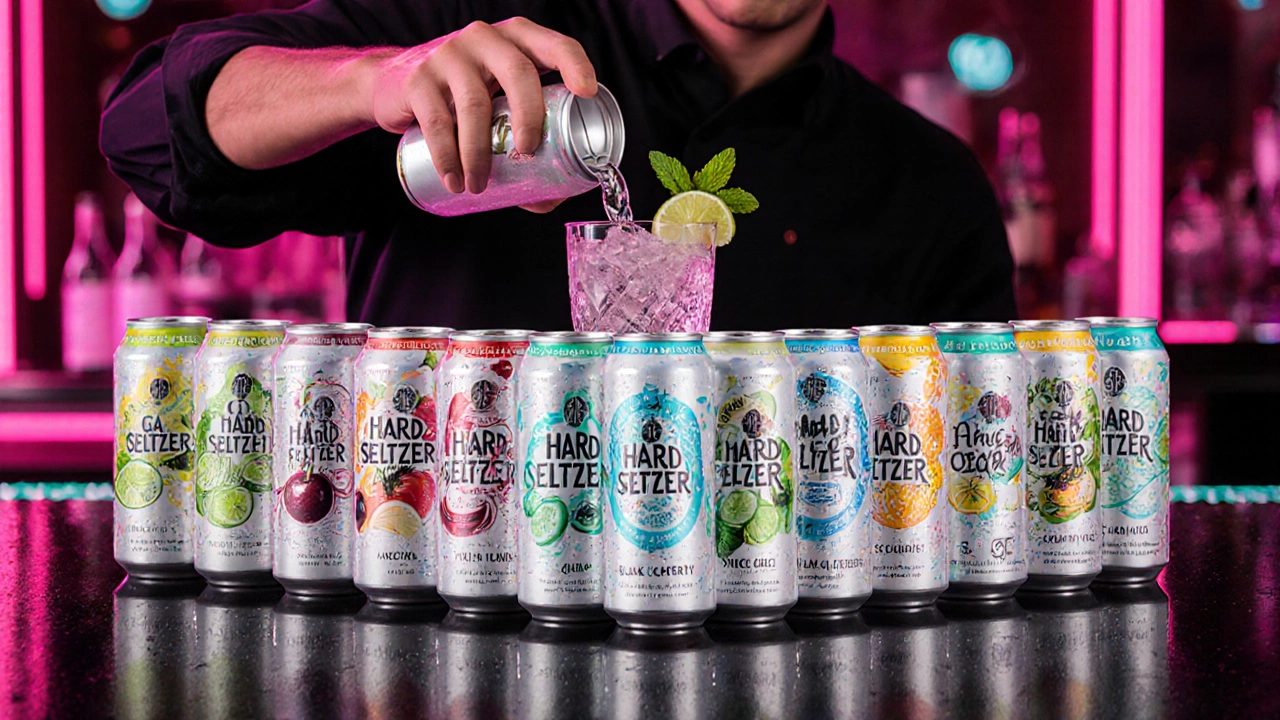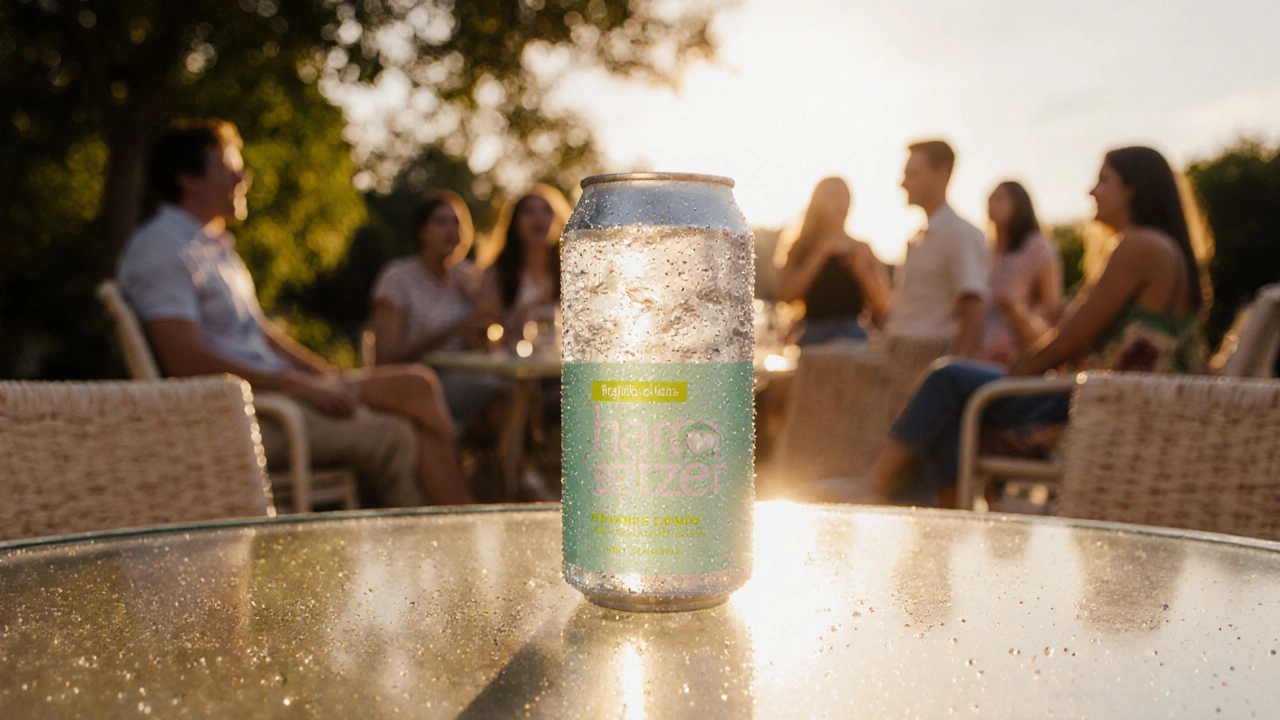Hard Seltzer Calculator
Enter your seltzer details and click Calculate to see the nutritional breakdown
Ever wondered what the buzz about a hard seltzer really means? That skinny, sparkling can you see at the bar isn’t just a fad - it’s a whole new category of alcohol that’s reshaping how we think about drinks.
What Exactly Is Hard Seltzer?
Hard seltzer is a low‑calorie, carbonated alcoholic beverage made by fermenting sugar, malt, or fruit juice and then adding flavor and carbonation. Unlike traditional beer, which relies on barley and hops for flavor, hard seltzer focuses on a clean, crisp palate that lets fruity or botanical notes shine.
Typical attributes include an ABV (alcohol by volume) of 4‑6%, 90‑100 calories per 12‑oz can, and a gluten‑free label for most brands. The result is a drink that feels light enough for a sunny patio but still delivers a noticeable buzz.
How Hard Seltzer Is Made
The production process starts with a simple sugar base-often cane sugar, beet sugar, or a malt‑derived syrup. This base undergoes fermentation, where yeast converts the sugars into ethanol and carbon dioxide.
Once the alcohol content reaches the target 4‑6% ABV, the liquid is filtered to remove any residual flavors. At this stage, manufacturers add natural flavor extracts (like lime, black cherry, or cucumber) and carbonate the mixture to create the signature fizz.
Because the base is neutral, the final product can be positioned as gluten‑free, low‑calorie, and even vegan-attributes that are hard to guarantee with traditional grain‑heavy beers.
Flavors, Brands, and the Current Landscape
The market exploded in 2020, and by 2025 there are more than 150 brands on shelves across the U.S., Canada, and Europe. The most recognizable names include White Claw, which led the early wave with its original lime, black cherry, and raspberry varieties. Truly followed suit, offering a broader fruit portfolio and a “hard seltzer spritz” line that leans into cocktail territory.
Beyond the big players, craft breweries and even wineries are launching their own versions-think citrus‑infused blends, botanical‑forward mixes, and limited‑edition seasonal flavors. The flexibility of the production method lets brands experiment without the time‑intensive hop schedules that beer requires.

Hard Seltzer vs. Traditional Drinks
| Attribute | Hard Seltzer | Light Beer | Ready‑to‑Drink Cocktail |
|---|---|---|---|
| Typical ABV | 4‑6% | 4‑5% | 5‑7% |
| Calories (12oz) | 90‑100 | 100‑110 | 150‑200 |
| Gluten‑Free | Yes (most brands) | No (barley‑based) | Depends on base spirit |
| Sugar Content | 2‑4g | 1‑3g | 15‑30g |
| Flavor Flexibility | High (fruit, botanical, spice) | Limited (hops, malt) | Medium (pre‑mixed spirits) |
The table shows why many health‑conscious drinkers gravitate toward hard seltzer: fewer calories, low sugar, and a gluten‑free label-all while keeping the buzz.
Health & Lifestyle Considerations
Because the base sugar is fully fermented, the residual carbs are minimal. A 12‑oz can typically contains 2‑4g of sugar, translating to about 0.5 teaspoons-much less than a mixed cocktail that can hold 15g or more of added syrups.
However, it’s not a free pass. The alcohol still contributes to calorie count, and excessive consumption can impact liver health just like any other spirit. The “low‑calorie” tag may also mask the fact that many brands use artificial sweeteners to keep sugar counts down, which some consumers prefer to avoid.
For those with gluten sensitivity, most hard seltzers are safe, but it’s wise to double‑check the label. Some craft versions still start with a malt base and may retain trace gluten.
Serving, Mixing, and Food Pairings
Hard seltzer shines on its own-just chill the can, pop the top, and enjoy the crisp fizz. But it’s also a versatile mixer. Add a splash of fresh lime juice and a dash of bitters for a minimalist cocktail, or blend with frozen berries for a frozen “seltzer slush.”
When pairing with food, think light and fresh. Grilled seafood, citrus‑marinated chicken, salads with vinaigrette, and soft cheeses like mozzarella complement the drink’s clean palate. The subtle carbonation also helps cleanse the palate between bites, similar to a traditional sparkling wine.

Market Growth and What’s Next
According to the 2024 Beverage Analytics Report, hard seltzer sales jumped 35% year‑over‑year, reaching $5.6billion in U.S. retail dollars. The demographic most driving growth is Millennials and GenZ, who favor low‑calorie, Instagram‑ready drinks.
Future trends point toward “hard kombucha” hybrids, higher‑ABV “hard sparkling water” variants, and premium craft lines that use real fruit puree instead of flavor extracts. Expect to see more canned cocktail‑style seltzers that blend the convenience of a ready‑to‑drink with the lightness of a seltzer.
Regulators are also paying attention. In several states, the definition of hard seltzer now requires a maximum sugar content of 5g per serving and a clear statement of the base (sugar vs. malt). This transparency helps consumers make informed choices.
Key Takeaways
- Hard seltzer is a low‑calorie, carbonated alcoholic beverage fermented from sugar or malt.
- Typical ABV sits at 4‑6% with around 90‑100 calories per 12‑oz can.
- It offers gluten‑free options, minimal sugar, and a flexible flavor platform.
- Compared to light beer and ready‑to‑drink cocktails, hard seltzer wins on calories and sugar while staying competitively priced.
- Look for emerging premium lines and hybrid products as the market matures.
Frequently Asked Questions
Is hard seltzer really gluten‑free?
Most mainstream brands like White Claw and Truly use a fermented sugar base, making them gluten‑free. However, some craft versions start with malt, so always check the label for a gluten‑free claim.
How does the calorie count compare to a regular beer?
A typical 12‑oz hard seltzer has 90‑100 calories, whereas a light lager ranges from 100‑110 calories. The difference comes from lower residual sugar and the lack of malt‑derived carbs in seltzer.
Can I use hard seltzer as a cocktail base?
Absolutely. Its neutral flavor makes it a great mixer for fresh fruit, herbs, or a splash of spirit. A popular recipe mixes hard seltzer with gin, cucumber slices, and a squeeze of lime for a low‑calorie spritz.
What’s the difference between hard seltzer and kombucha?
Hard seltzer is typically fermented from simple sugars and then flavored, while kombucha is a fermented tea that retains probiotic cultures. Both can be alcoholic, but kombucha often has a tangier, slightly vinegary profile.
Are there any hidden sugars in hard seltzer?
Most brands keep added sugar under 5g per serving. The small amount of residual sugar comes from incomplete fermentation, but many manufacturers use natural sweeteners or zero‑calorie flavorings to stay low‑sugar.


